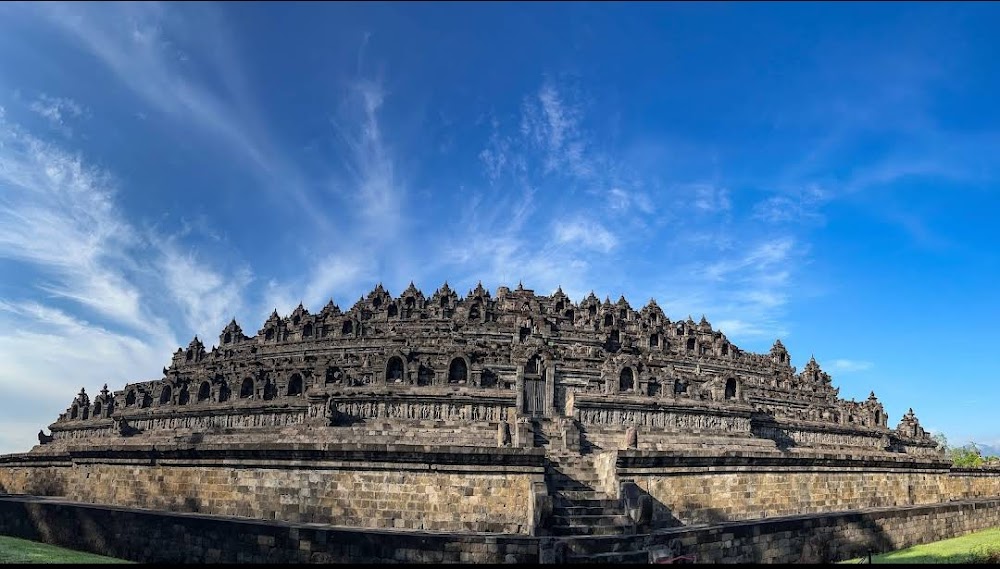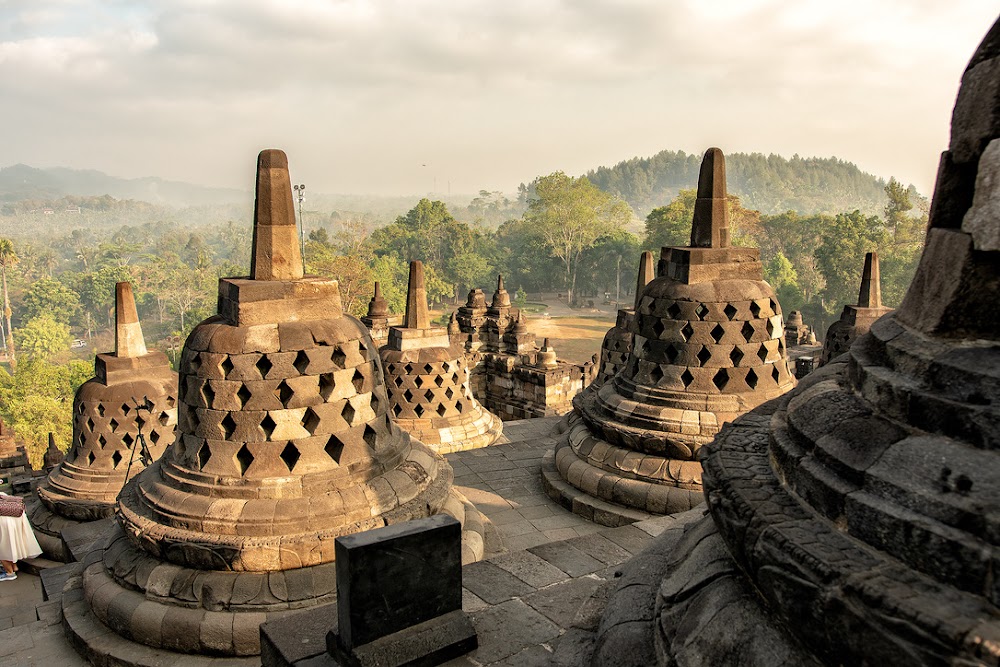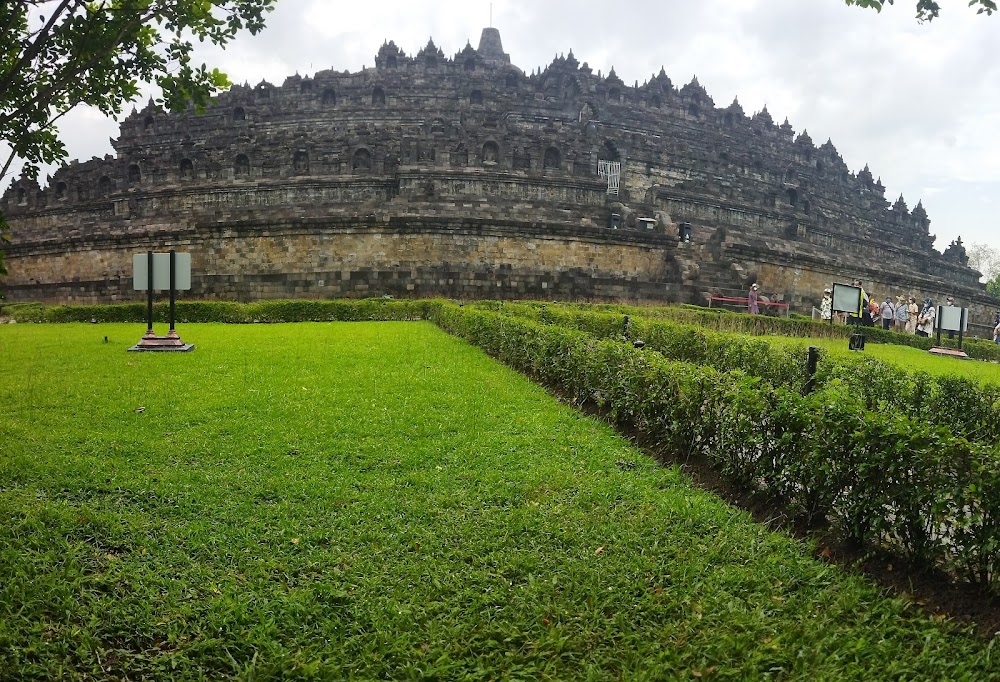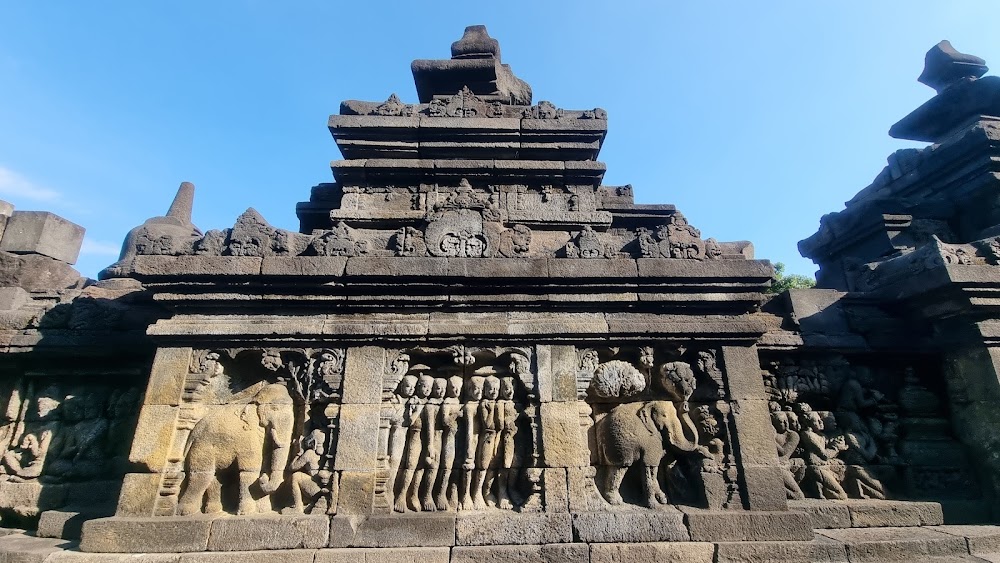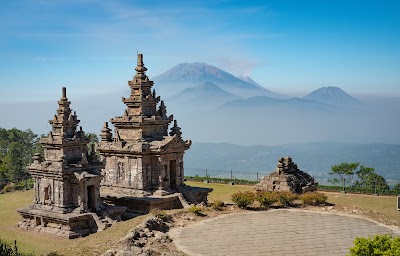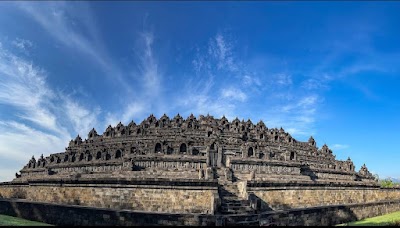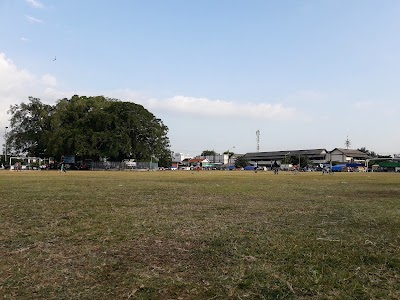Borobudur Temple (Candi Borobudur)
Related Places
Overview
**Borobudur Temple: A Marvel of Buddhist Architecture**
Located in the enchanting city of Magelang, Jawa Tengah, Indonesia, **Borobudur Temple** stands as a breathtaking testament to Buddhist architecture and artistry. Constructed during the 9th century under the Sailendra Dynasty, this monumental structure is both a significant pilgrimage site and a marvel of ancient engineering and craftsmanship.
The temple's construction began around **750 AD** and reached completion approximately **825 AD**. Remarkably, Borobudur was built without modern machinery, relying solely on stone tools and manual labor. Comprising around two million blocks of volcanic stone, each piece was meticulously cut and fitted together. These stones were likely sourced from nearby rivers and transported to the site using a combination of human and animal labor, showcasing the extraordinary effort invested in this iconic structure.
Borobudur is designed in the shape of a massive **stupa** and is perched on a hill, resembling a stepped pyramid. The temple features **nine stacked platforms**—six square and three circular—culminating in a central dome. Encircling this central dome are **72 Buddha statues**, each seated within a perforated stupa, adding to the temple's serene beauty and spiritual significance.
One of the most captivating aspects of Borobudur is the **intricate carvings** that adorn its walls. With over **2,600 relief panels**, these carvings depict various scenes, including the life of Buddha, his teachings, and Jataka tales (stories of Buddha's previous lives). These reliefs not only serve as decorative elements but also guide pilgrims on a narrative journey as they circumambulate the temple, enriching their spiritual experience.
Each level of Borobudur has specific meanings rooted in **Buddhist cosmology**. The base, known as **Kamadhatu**, represents the world of desire and the consequences of human actions. The middle levels, or **Rupadhatu**, symbolize the world of forms, emphasizing the process of overcoming attachments and desires. The uppermost levels, called **Arupadhatu**, represent the formless world, symbolizing the attainment of enlightenment and the state of Nirvana.
The design of Borobudur also reflects elements of **Javanese culture**, blending indigenous beliefs with Buddhist teachings. This fusion is evident in the temple's architectural style and its alignment with natural elements. For instance, it is carefully oriented with the cardinal points and incorporates symbolic features that represent the connection between the earth and the cosmos.
Borobudur has experienced periods of neglect and restoration throughout its history. After being abandoned in the **14th century** due to the decline of Buddhist and Hindu kingdoms in Java, the temple became buried under layers of volcanic ash and jungle growth. It was rediscovered in the early **19th century** by **Sir Thomas Stamford Raffles**, the British Governor of Java, during his explorations.
Significant restoration efforts unfolded throughout the **20th century** to preserve and protect Borobudur. Notably, a major restoration project was carried out from **1975 to 1982** under the guidance of **UNESCO** and the Indonesian government. This comprehensive effort involved dismantling and reassembling the structure to address stability and conservation issues, ensuring the temple's longevity for future generations.
Today, **Borobudur Temple** is a **UNESCO World Heritage Site** and remains an essential cultural and religious landmark. It attracts visitors from around the globe who come to admire its architectural grandeur and spiritual significance. The temple continues to serve as a place of worship and pilgrimage, particularly during **Vesak**, the celebration of Buddha's birth, enlightenment, and death.
Borobudur’s enduring beauty and historical importance stand as a testament to human creativity, devotion, and the timeless appeal of spiritual pursuits. Whether you are a history enthusiast, a spiritual seeker, or simply a traveler in search of awe-inspiring sights, Borobudur Temple is a must-visit destination that promises to leave a lasting impression.


